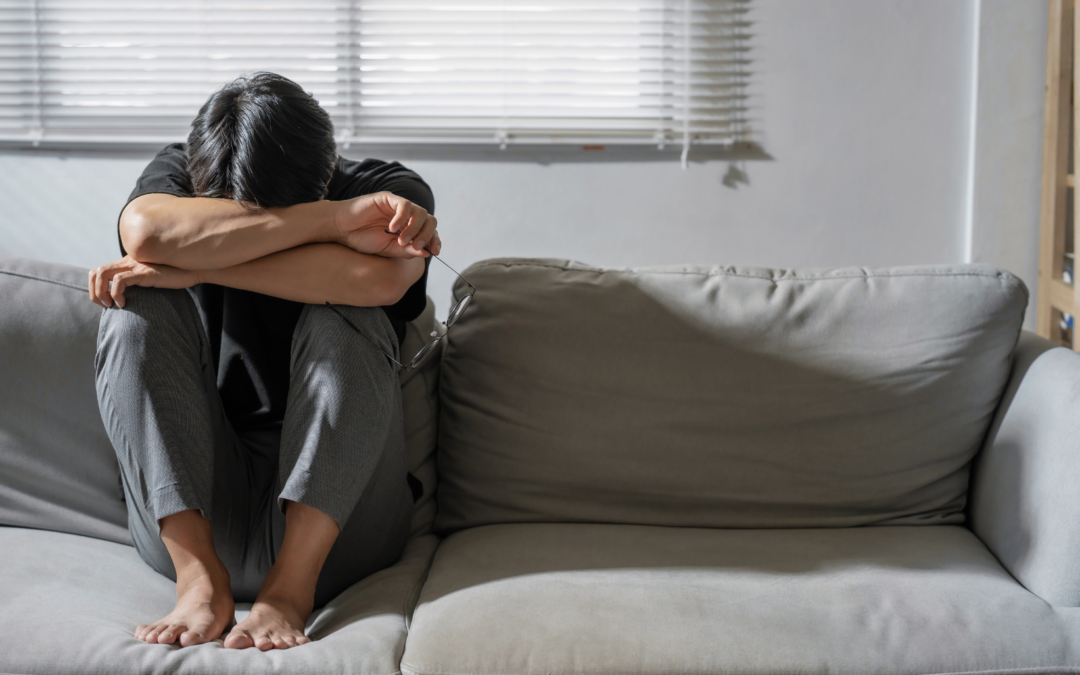If anxiety had a resume, it would be stacked. Overthinking expert. Master of worst-case scenarios. Triple degree in “What if?”
Whether it’s social anxiety, performance pressure, constant worrying, or that low-key hum of dread that shows up for no reason at all—anxiety has a sneaky way of running the show.
But here’s the good news: there are real, practical tools that can help you stop anxiety from calling all the shots.
One of the most effective approaches? DBT for anxiety.
You might have heard of Dialectical Behavior Therapy (DBT) as a treatment for borderline personality disorder or emotional dysregulation—but it’s also a total game-changer for people who deal with anxiety on the regular.
DBT gives you a toolbox of skills to manage the mental and physical symptoms of anxiety while helping you build more confidence, mindfulness, and emotional resilience along the way.
And if you’re thinking, Cool, but where do I start?—this guide’s for you.
Is DBT Therapy Good for Anxiety?
Let’s start with the big question: Is DBT therapy good for anxiety?
Short answer? Yes.
Longer answer? Absolutely, especially if your anxiety looks like:
- Racing thoughts you can’t shut off
- Trouble sleeping or relaxing
- Feeling stuck in loops of worry and what-ifs
- Avoiding situations or decisions out of fear
- Constant second-guessing yourself
- Difficulty tolerating uncertainty
DBT for anxiety works by helping you:
- Understand why you react the way you do
- Learn concrete strategies to ground yourself
- Build tolerance for uncomfortable emotions
- Stay present instead of spiraling into the future
- Make values-based choices instead of fear-based ones
It combines mindfulness, emotion regulation, interpersonal effectiveness, and distress tolerance—all essential when anxiety is knocking (or banging) at your door.
And the best part? You don’t have to figure it out alone.
We offer intensive programs, assessments, group therapy, teen therapy, therapy for children, individual therapy, couples counseling, and family therapy—all designed to support your DBT journey in whatever way works best for you.
What Are DBT Coping Strategies for Anxiety?
Here comes the fun part (okay, maybe not fun, but definitely helpful). When it comes to DBT for anxiety, here are a few standout coping strategies to keep in your back pocket:
1. TIP Skills (For Instant Calm)
TIP stands for Temperature, Intense Exercise, Paced Breathing, and Progressive Muscle Relaxation.
When your anxiety is physical—racing heart, sweaty palms, short breaths—these are your go-tos.
- Splash cold water on your face or hold an ice pack to your neck (Temperature)
- Do 30 seconds of jumping jacks (Intense Exercise)
- Inhale for 4, exhale for 6 (Paced Breathing)
- Tense and relax different muscle groups (Progressive Muscle Relaxation)
TIP skills are your emergency brake when anxiety is going from zero to 100.
2. Mindfulness of Current Emotion
Instead of fighting your anxiety, DBT teaches you to ride the wave.
Try this:
- Name the emotion (anxiety)
- Notice where you feel it in your body
- Breathe into it
- Let it rise and fall like a wave—without trying to make it go away
It might sound simple, but allowing the feeling to be there without judgment can be surprisingly powerful.
3. Opposite Action
Sometimes the best way to deal with anxiety is to do the thing you’re scared of—on purpose.
If anxiety is telling you to avoid, cancel, isolate, or freeze… try doing the opposite (even in small steps).
- Feeling anxious about texting someone back? Text them.
- Nervous to show up to a social event? Show up for 15 minutes.
This builds confidence that you can handle anxiety—and that it doesn’t have to make your decisions for you.
4. PLEASE Skills (Yes, That’s the Name!)
This one’s about reducing your vulnerability to emotional spirals by taking care of your body.
PLEASE stands for:
- PL – Treat Physical illness
- E – Eat balanced meals
- A – Avoid mood-altering substances
- S – Get enough Sleep
- E – Exercise regularly
When you’re feeling anxious, these are your basic, but critical, self-care checkpoints. Sometimes a snack, a nap, or a walk can do more than a hundred thought loops ever could.
DBT for anxiety gives you a layered toolkit. Some strategies work in the heat of the moment, others build resilience over time.
Together, they help you feel less hijacked by your anxiety—and more like you.
What Is the 3-3-3 Rule for Anxiety?
This one isn’t exclusive to DBT, but it’s a great grounding tool that fits beautifully with the DBT approach. The 3-3-3 rule for anxiety is a quick way to pull yourself out of your spiraling mind and into the present moment.
Here’s how it works:
- Name 3 things you see
- Name 3 things you hear
- Move 3 parts of your body (wiggle your toes, roll your shoulders, stretch your arms)
It’s simple, quick, and surprisingly effective—like a mini mindfulness reset when your brain is racing. In the DBT world, this fits under distress tolerance and mindfulness skills.
If you’re new to DBT for anxiety, starting with small practices like this can help build trust in the process. Little wins matter.
What Is the 24-Hour Rule in DBT?
Ah, the famous 24-hour rule. This one is more of a boundary than a skill, but it’s an important one in the DBT universe—especially for folks who struggle with impulsive decisions or big emotional reactions.
The rule?
Wait 24 hours before making a major, potentially life-changing decision when you’re emotionally overwhelmed.
Why? Because when anxiety is high, our brains love a good panic plan.
- “I’m quitting this job right now.”
- “I’m ending this relationship tonight.”
- “I’m never leaving the house again.”
Sound familiar?
The 24-hour rule gives your nervous system time to settle so you can respond, not react. In the context of DBT for anxiety, it helps prevent you from making decisions based on fear or discomfort in the moment.
Spoiler: Most of the time, once the emotion wave passes, your decision-making becomes clearer.
Final Thoughts: DBT for Anxiety Can Change the Way You Live
Anxiety is loud, persistent, and honestly kind of a drama queen.
But that doesn’t mean it gets to run your life. DBT for anxiety offers real, research-backed ways to cope, calm down, and take back control—from a place of compassion, not force.
And you don’t have to navigate it alone. Whether you’re interested in individual therapy, teen or child therapy, group support, or even intensive DBT programs, we’re here to help you find your footing.
Your anxiety doesn’t define you. It’s just one part of your story.
With the right support, the right skills, and a little bit of patience, you can learn to quiet the chaos and move forward—one breath, one skill, one step at a time.
You’ve got this. And we’ve got you.
CONTACT
LOCATIONS
Charlotte
Davidson
Huntersville
VIRTUAL SERVICES IN:
North Carolina
South Carolina
Florida
Vermont
Kansas
California
Arizona
Live Happier.
Love Deeper.
Start Now.


